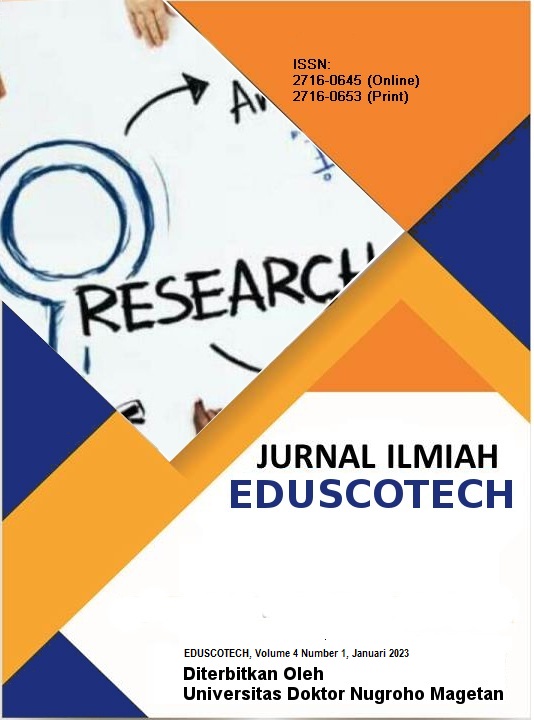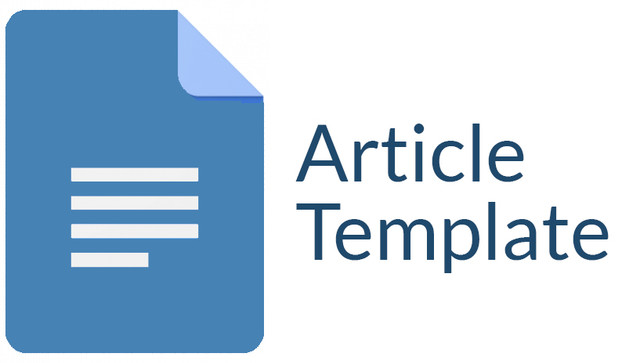Pengaruh Latihan Knee Tuck Jump dan Quick Leap Terhadap Kemampuan Lompat Jauh Gaya Jongkok Pada Siswa Putra Kelas IV dan V di SDN 02 Winongo Kota Madiun
Keywords:
Knee Tuck Jump, Quick Leap, Lompat .Jauh Gaya .JongkokAbstract
Permasalahan penelitian: Apakah ada pengaruh latihan knee tuck jump, dan Quick Leap terhadap peningkatan . Jenis penelitian Eksperimen. Populasi penelitian 120 orang. Variabel bebas knee tuck jump dan Quick Leap. Variabel terikat lompat jauh gaya jongkok. Hasil analisis data pre-test dan post-test kelompok eksperimen 1 diperoleh thitung = 14,636 >ttabel = 2,571. Analisis data pre-test dan post-test kelompok eksperimen 2 diperoleh thitung = 12,9777>ttabel = 2,571. Analisis data pre-test dan post-test kelompok eksperimen 3 diperoleh thitung = 7,613>ttabel = 2,571. Latihan knee tuck jump dan Quick Leap memberikan pengaruh terhadap peningkatan . Latihan memberikan pengaruh lebih baik daripada latihan knee tuck jump dan Quick Leap. Latihan knee tuck jump dan Quick Leap memberikan pengaruh terhadap peningkatan lompat jauh gaya jongkok
Downloads
References
Munafisah. 2010. Bermain Bola Voli. Demak: CV. Aneka Ilmu.
PBVSI. 2012. Peraturan Bola Voli Internasional. Jakarta: Mutiara.
Roesdiyanto. 2014. Pelatihan Bolavoli. Malang: Universitas Negeri Malang.
Marsini, M. (2023). The Effectiveness of the E-Library as a Learning Resource for Elementary School Students' Social Studies in Improving Literacy Skills. AL-ISHLAH: Jurnal Pendidikan, 15(3), 3726-3736.
Marsini, M. (2023). Motivasi Belajar Siswa pada Pembelajaran IPS di SDN Kraton VI Maospati. Jurnal Educatio FKIP UNMA, 9(1), 302-309.
Purwaningsih, L., Hadianti, A., & Marsini, M. (2022). PROTOTYPE DESIGN FLIPBOOK MEDIA IN TEACHING GRAMMAR “SIMPLE PAST TENSE”. Indonesian EFL Journal, 8(2), 287-294.
Sugiyono. 2016. Metode Penelitian Pendidikan. Bandung: Alfabeta.
Widiastuti. 2015 Tes dan Pengukuran Olahraga. Jakarta: PT Raja Grafindo Perseda.
Downloads
Published
Issue
Section
License

This work is licensed under a Creative Commons Attribution-ShareAlike 4.0 International License.
Authors who publish with this journal agree to the following terms:
1. Copyright on any article is retained by the author(s).
2. The author grants the journal, right of first publication with the work simultaneously licensed under a Creative Commons Attribution License that allows others to share the work with an acknowledgment of the work’s authorship and initial publication in this journal.
3. Authors are able to enter into separate, additional contractual arrangements for the non-exclusive distribution of the journal’s published version of the work (e.g., post it to an institutional repository or publish it in a book), with an acknowledgment of its initial publication in this journal.
4. Authors are permitted and encouraged to post their work online (e.g., in institutional repositories or on their website) prior to and during the submission process, as it can lead to productive exchanges, as well as earlier and greater citation of published work.
5. The article and any associated published material is distributed under the Creative Commons Attribution-ShareAlike 4.0 International License









